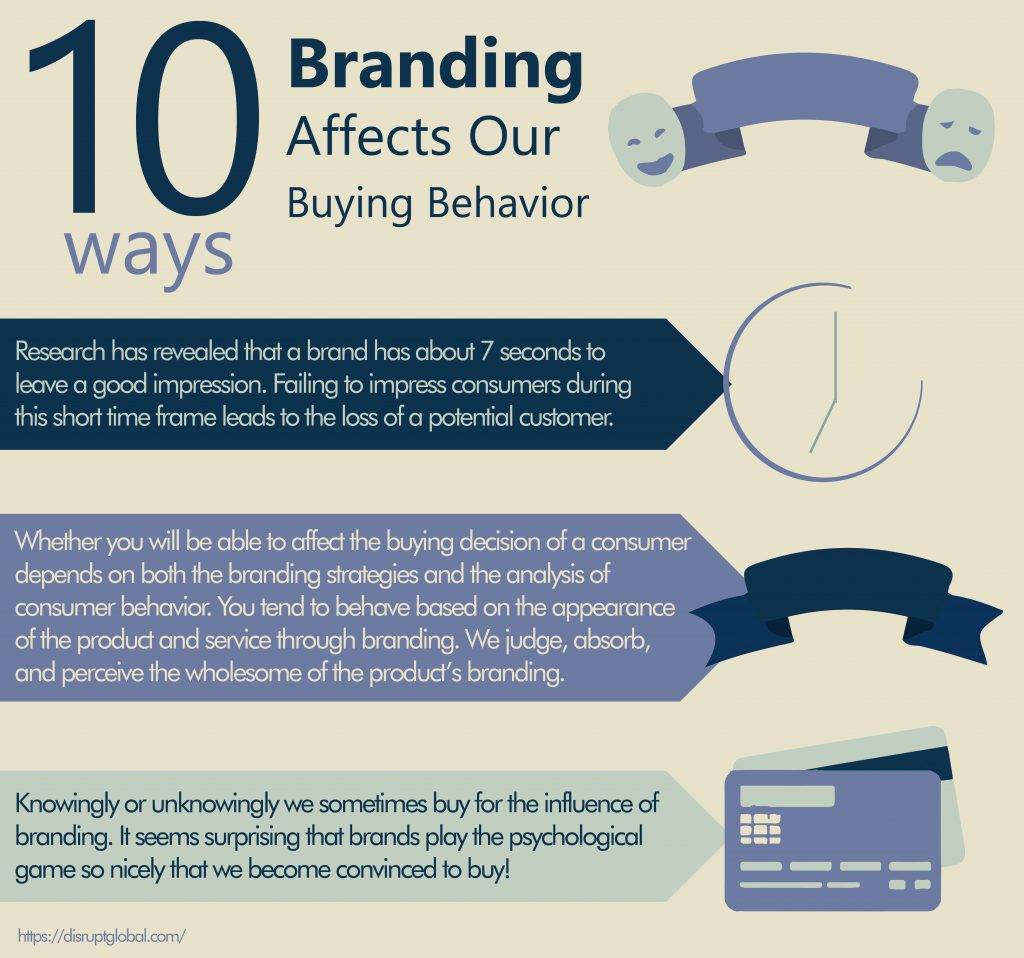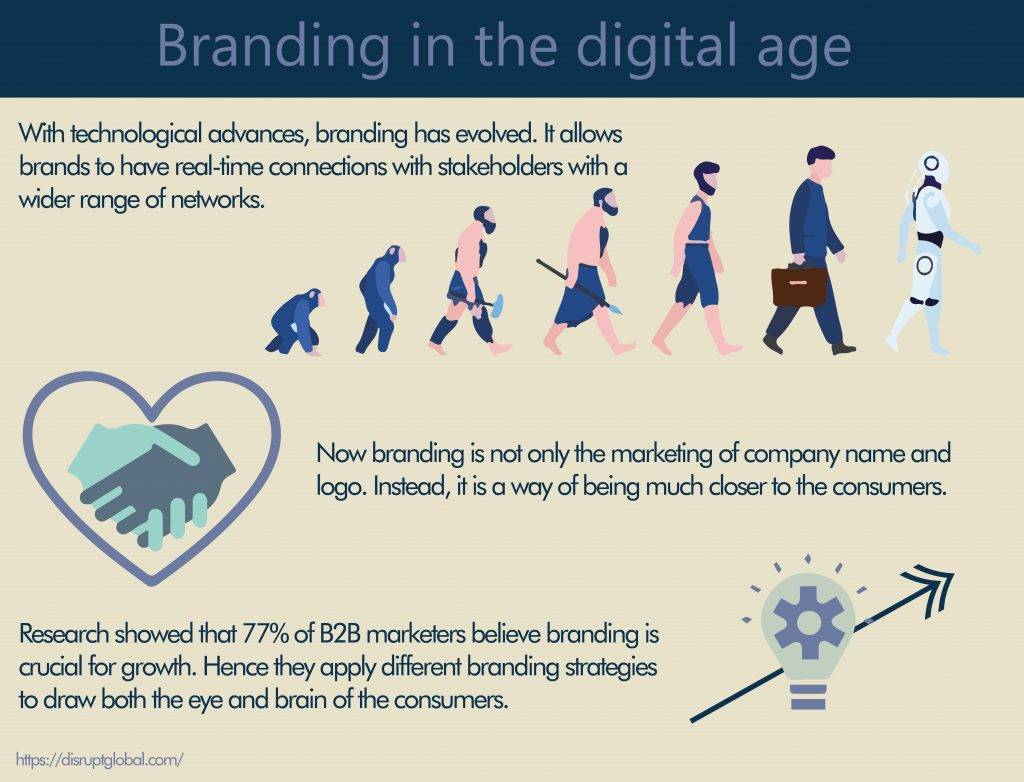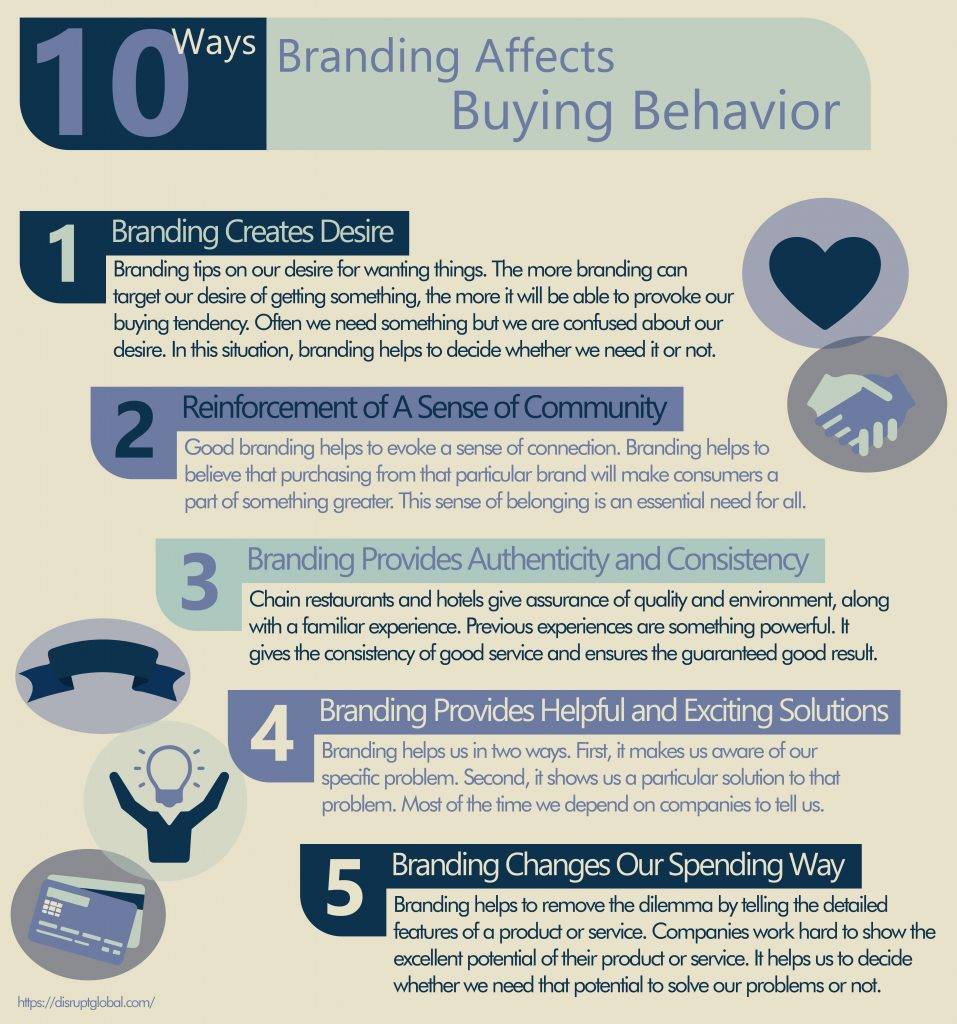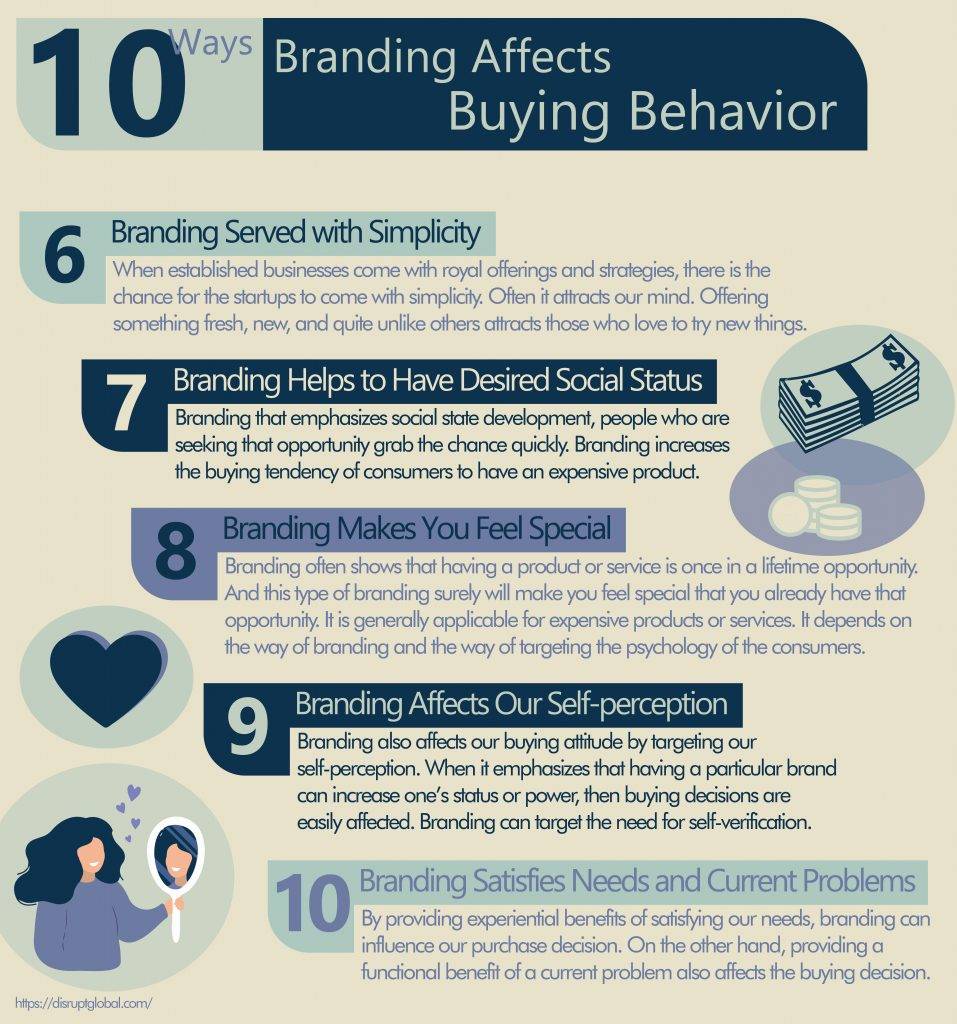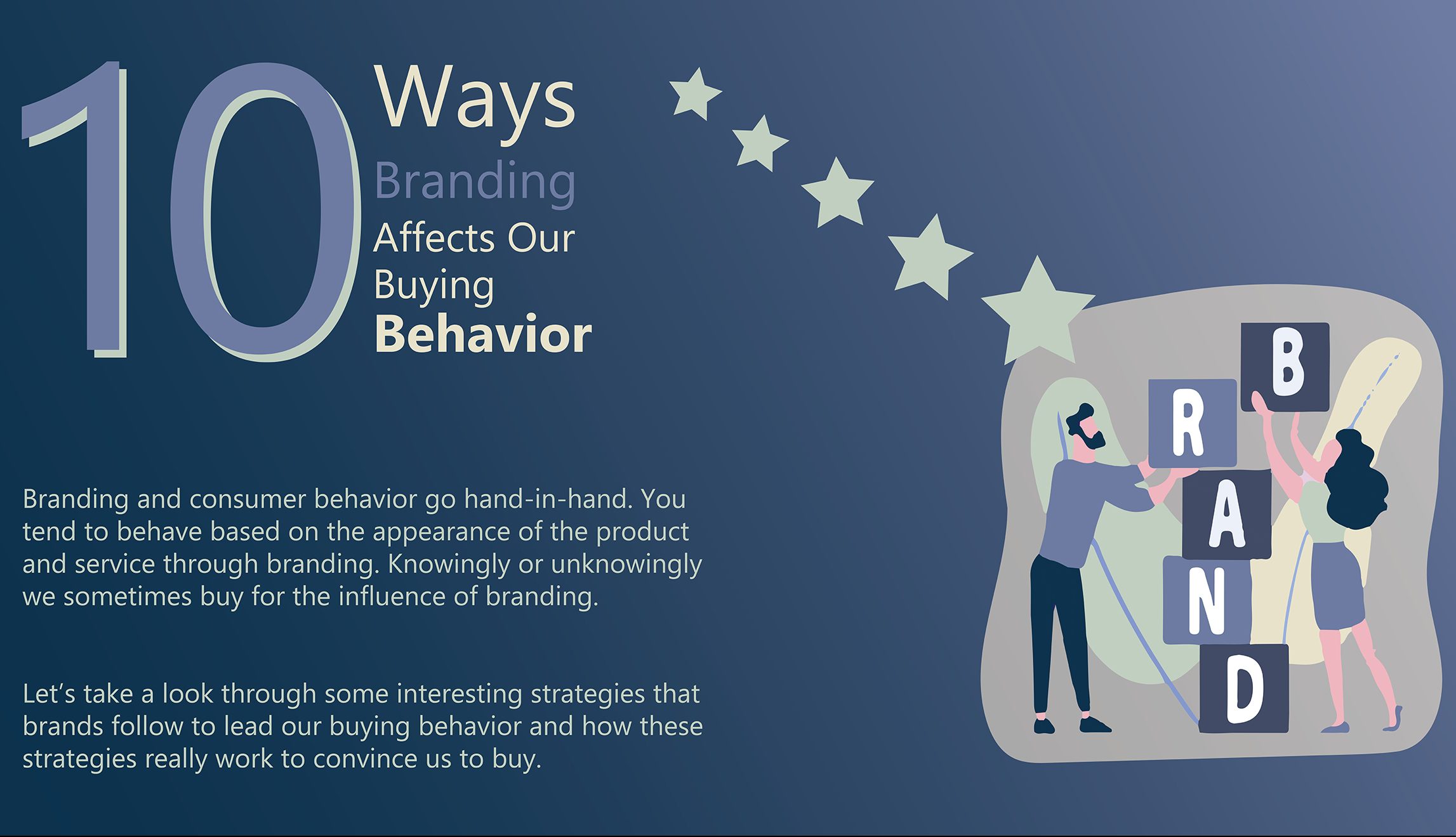
10 Ways Branding Affects Our Buying Behavior
Posted by. Disrupt Tech. September 7, 2021
Research has revealed that a brand has about 7 seconds to leave a good impression. Failing to impress consumers during this short time frame leads to the loss of a potential customer. Surely you won’t like to lose even one!
Whether you will be able to affect the buying decision of a consumer depends on both the branding strategies and the analysis of consumer behavior. It is like branding and consumer behavior go hand-in-hand.
You tend to behave based on the appearance of the product and service through branding. We judge, absorb, and perceive the wholesome of the product’s branding and end up buying it or just ignore it.
It’s true that it is not always only about making a purchase happen for branding endeavors. It involves other steps like awareness, familiarity, consideration, and advocacy. But when we go through all that steps and make a purchase and even recommend to others, that’s when brands are completely successful in their branding.
You might think that you buy when you think to buy. But this is not always true!
Knowingly or unknowingly we sometimes buy for the influence of branding. It seems surprising that brands play the psychological game so nicely that we become convinced to buy!
Through this article, we will look through some interesting strategies that brands follow to lead our buying behavior and how these strategies really work to convince us to buy.
Branding in the digital age
With technological advances, branding has evolved. It allows brands to have real-time connections with stakeholders with a wider range of networks. Once penetrating foreign markets was difficult for brands which are now easier.
As people from different regions and cultures have different tastes or choices, branding is done to target them differently. Now branding is not only the marketing of company name and logo. Instead, it is a way of being much closer to the consumers.
Research showed that 77% of B2B marketers believe branding is crucial for growth. Hence they apply different branding strategies to draw both the eye and brain of the consumers.
10 Ways Branding Affects Buying Behavior
Branding Creates Desire
Last time when you went to a super shop to buy some necessary stuff, certainly, you bought some more items that were not on your shopping list. Or it is so tempting to look at a photo of your favorite item from your favorite restaurant.
These desires and temptation maximum time are created by branding. Branding tips on our desire for wanting things. The more branding can target our desire of getting something, the more it will be able to provoke our buying tendency.
Often we need something but we are confused about our desire. In this situation, branding helps to decide whether we need it or not.
Reinforcement of A Sense of Community
Humans always desire a sense of belonging. Good branding helps to evoke a sense of connection. When people find themselves as a contributor to a business, they become more involved.
Branding helps to believe that purchasing from that particular brand will make consumers a part of something greater. As an example, Housing companies try to emphasize the sense of having a flat in a residence will help you to live a standard life with your dearest ones. This sense of belonging is an essential need for all. And we are often subconsciously driven to the products that can target those needs.
Branding Provides Authenticity and Consistency
People love to visit chain restaurants or hotels. Why do they love so? This is because these chain restaurants and hotels give assurance of quality and environment. And many people have a familiar experience.
So there is something powerful about previous experience. We prefer to have a visit or have a thing that keeps the consistency of good service and ensures the guaranteed good result.
As an example, there are some buyers who love to try something new. On the other side, there are others who love to have a good and reliable source of product or service. This is why many iPhone users don’t want to switch to other options. And household names like Amazon, Nike, or Starbucks continue to be successful.
Branding Provides Helpful and Exciting Solutions
We buy to fulfill our needs. Branding helps us in two ways. First, it makes us aware of our specific problem. Second, It shows us a particular solution to that problem. In our busy lives, often we don’t have time to search for what we need. So, most of the time we depend on companies to tell us.
Such as, branding has focused on the problem of body shaming in the workplace against women. So brands are coming with a dynamic solution of shapewear for boosting confidence.
Branding Changes Our Spending Way
Often we are in doubt about buying a cheap or expensive product. Branding helps to remove this dilemma by telling the detailed features of a product or service. In this way of branding, we can spend our money both reasonably and intelligently.
In any branding, companies work hard to show the excellent potential of their product or service. It helps us to decide whether we need that potential to solve our problems or not. So making the buying decision becomes easier and the way of spending money becomes justified.
Branding Served with Simplicity
Branding is not only for established businesses. When established businesses come with royal offerings and strategies, there is the chance for the startups to come with simplicity.
Often simple offerings attract our mind. This is because human nature is to avoid the complex terms and conditions that many large companies used to apply. Offering something fresh, new, and quite unlike others attracts those who love to try new things.
Branding Helps to Have Desired Social Status
Often we want to shout out loud in the crowd of elite people. However, what we need for that is most of the time unclear to us. Branding is always there to let us know about it.
Branding that emphasizes social state development, people who are seeking that opportunity grab the chance quickly. As an example, having a Ferrari car is a sign of belonging to an elite class. Branding of this idea increases the buying tendency of consumers to go for Ferrari cars when they want to have an expensive one.
Branding Makes You Feel Special
Branding often shows that having a product or service is once in a lifetime opportunity. And this type of branding surely will make you feel special that you already have that opportunity.
It is generally applicable for expensive products or services. Or for middle earning people it can be owning even a small flat! Whatever it is, it totally depends on the way of branding and the way of targeting the psychology of the consumers.
Branding Affects Our Self-perception
Branding also affects our buying attitude by targeting our self-perception. When it emphasizes that having a particular brand can increase one’s status or power, then buying decisions are easily affected.
Also, branding can target the need for self-verification. People like to have their own style of clothing, hairstyle, or outlook. When a specific branding can assure that it will help to have the desired personality then it will win the race.
Branding Satisfies Needs and Current Problems
By providing experiential benefits of satisfying our needs, branding can influence our purchase decision. Such as, having an experience of a pleasant atmosphere in a restaurant will attract you to make a regular visit there.
On the other hand, providing a functional benefit of a current problem also affects the buying decision. Such as you might never visit a petrol station to load your engine oil but for an emergency situation you have to go there when there is no other option out there. If you get good service there, you surely will visit for your next oil load!
The Bottom Line
To sum up, branding is not always positioning yourself to a unique quadrant of the graph if the position makes no value. Branding will be effective when it becomes successful to affect the buying decision of the consumers or at least can catch the eye of the people. So whatever your way of branding is, keep focusing on having its impact on consumer’s buying behavior.
